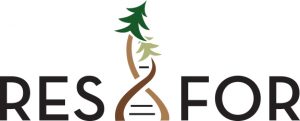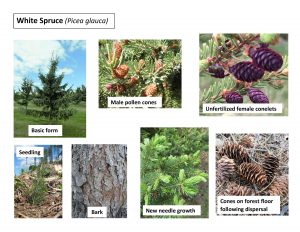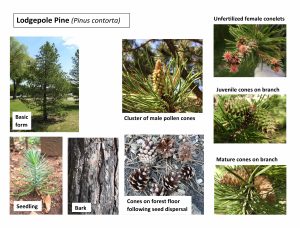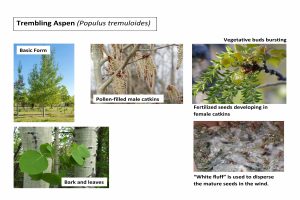Inside Education Resources
A component of the proposal funded by the Forest Resource Improvement Association of Alberta (FRIAA) included development of forest genetics resources that could be used by Inside Education, an organization committed to helping teachers and students better understand the science, technology, and issues related to the environment and natural resources. As part of this commitment, the RES-FOR team hired Diana White, a Masters of Forestry (MF) student, to complete this task as part of her requirements for her MF degree.
The goal of the project was to develop classroom resources for grade 6 and 12, design a field trip for Inside Education that would expose students and teachers to forest genetics and forestry in Alberta. In addition to working with her supervisor, Barb Thomas, Diana also consulted with Steve McIsaac, Executive Director of Inside Education, to ensure the products developed would suit Inside Education’s needs. Draft versions of the resources were also shared with the Alberta Forest Products Association’s (AFPA) Work Wild Educator, Emma Kniel. Both of these organizations have plans to, or currently are implementing use of the resources into their upcoming forest outreach programs. The resources developed by Diana are summarized below:
Resource #1 - Presentations - Grade Six Alberta Curriculum
A series of presentations were created with the Grade 6 Forestry class as the target audience. There are three presentations outlining tree reproduction in white spruce, lodgepole pine, and Populus spp., which are three common, native species in Alberta. These presentations describe the basic biology, reproduction, the relevance of these three species to Alberta and their use by the forest industry. The presentations (produced in PREZI format) are completely self-contained and include both written descriptions on the slides and a narrated script that plays with each slide. As an additional resource to the presentations, a worksheet and answer key are also available. Links to the presentations are as follows:
Resource #2 - Identification Cards - Grade Six Alberta Curriculum
The identification cards include illustrations summarizing the main points from the Prezi presentations. The cards describe the traits of each species for identification, as well as the male and female reproductive structures. The cards can be used to identify native species on the field trip.
Resource #3 - Discovery Learning Field Trip - Grade Six Alberta Curriculum
The field trip plan was designed as an outline to assist teachers in helping their students explore natural areas in any part of Alberta (the field trip can be conducted in any forested area). Some activities include helpful hints for identifying common, native trees in Alberta. “Take-Home Activities” include collecting serotinous pine cones and dormant Populus spp. branches and bringing them back to the classroom where they can be further analyzed under direction. Another activity encourages thinking about the role of the environment versus the role of genetics in the development of a tree. The field trip was designed to complement material learned in Prezi presentations and to be used alongside the identification cards.
Resource #4 - Forest Genetics Handout - Grade 12 Biology 30 Alberta Curriculum
This handout is titled “Forest Genetics in Alberta: A Case Study” and it is meant to expand on Mendel's pea-breeding experiments (which are taught in high school genetics) and provide students with real-life instances of Mendel's (and other genetic) principles being used in Alberta. The handout explains why tree breeding can be so challenging and introduces the Breeder's Equation, which is an understandable addition to the Biology 30 curriculum. This handout will be of particular interest to students who enjoy biology, genetics or statistics, and are interested in applying that knowledge in their future careers.



